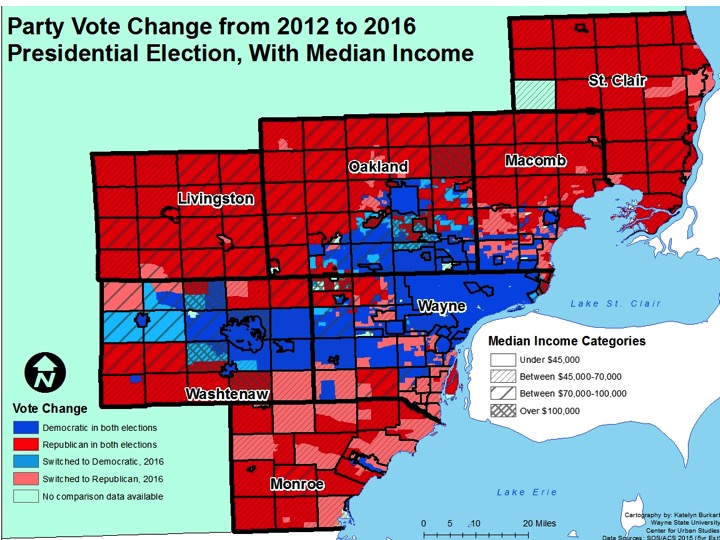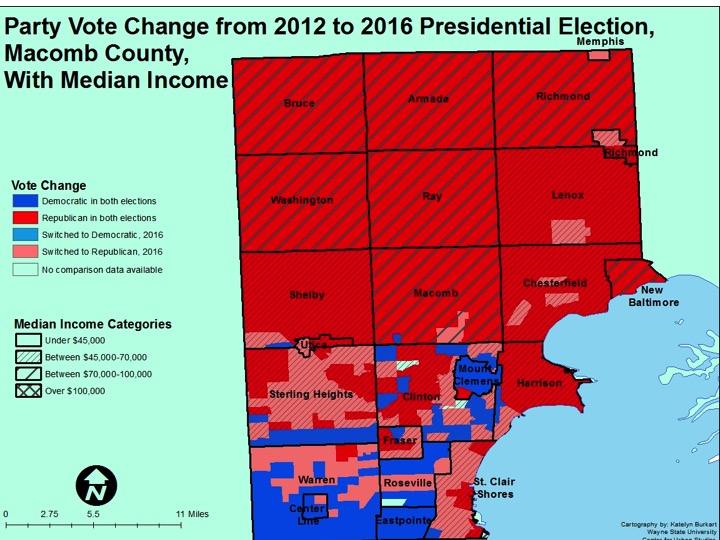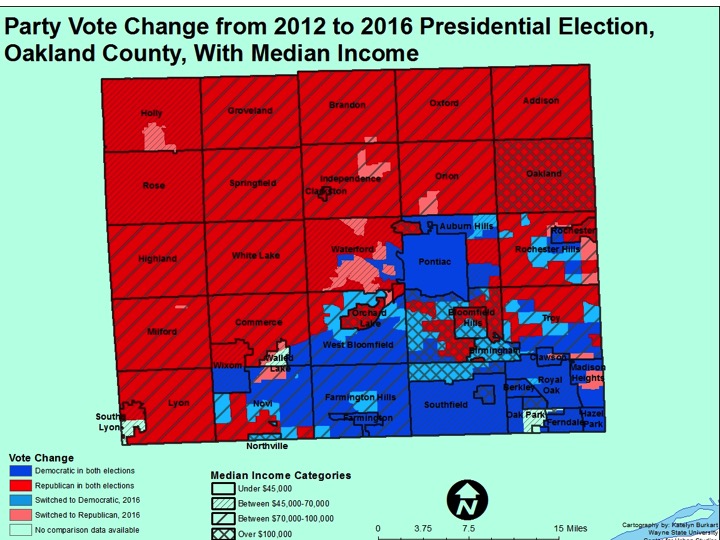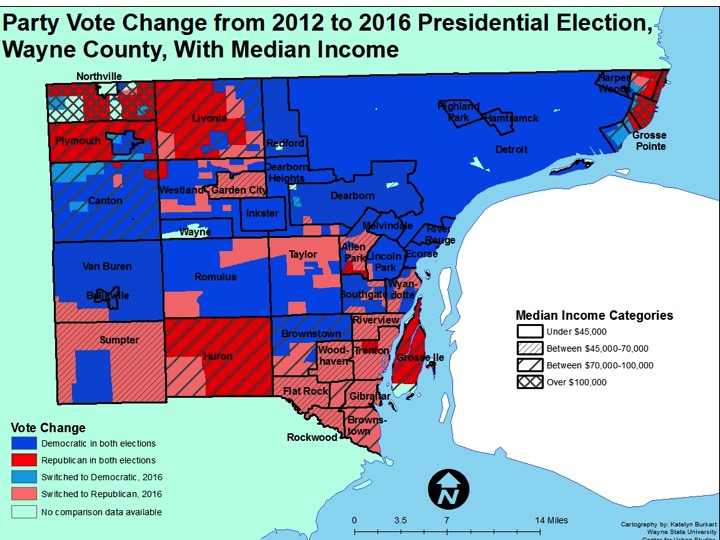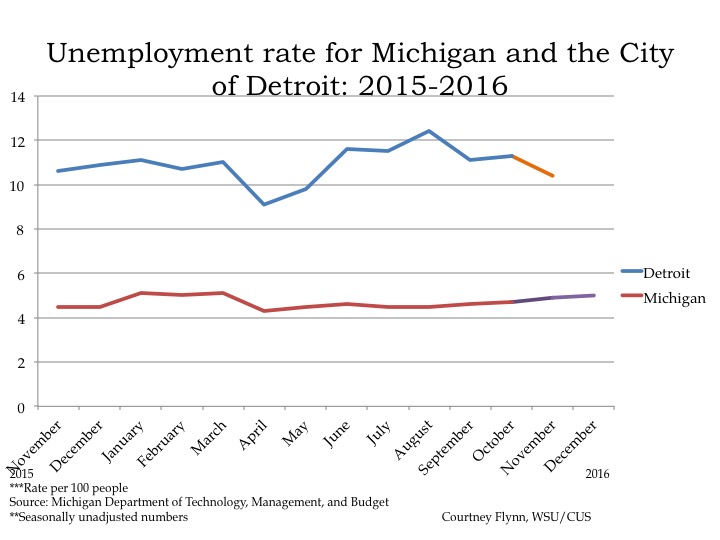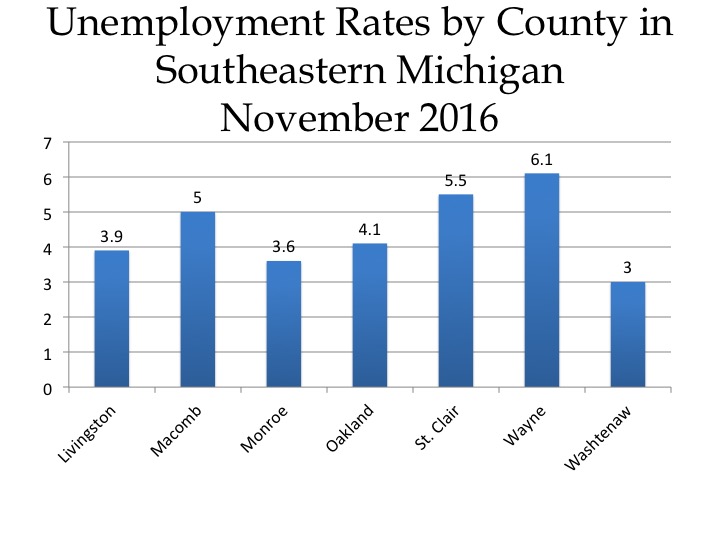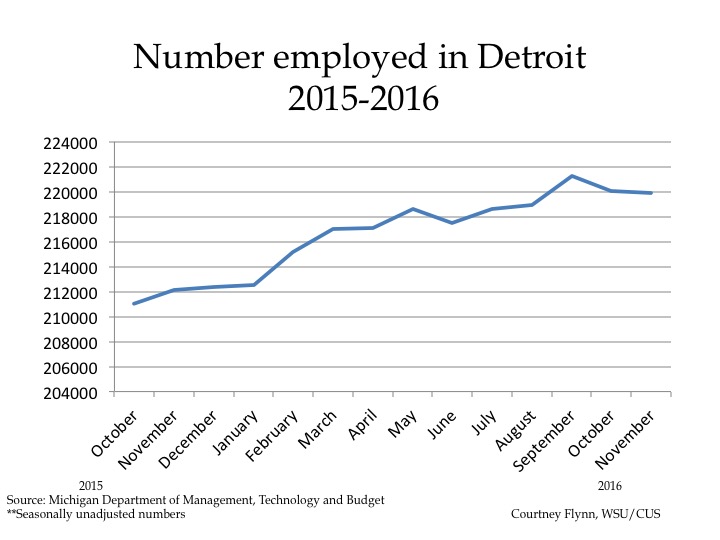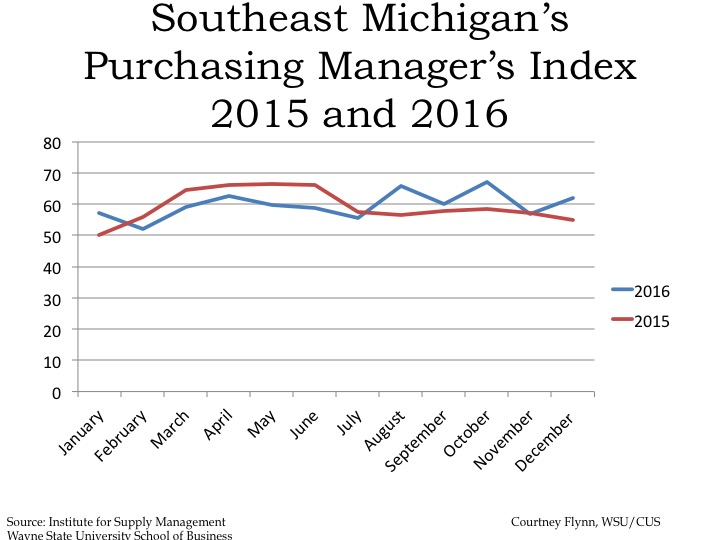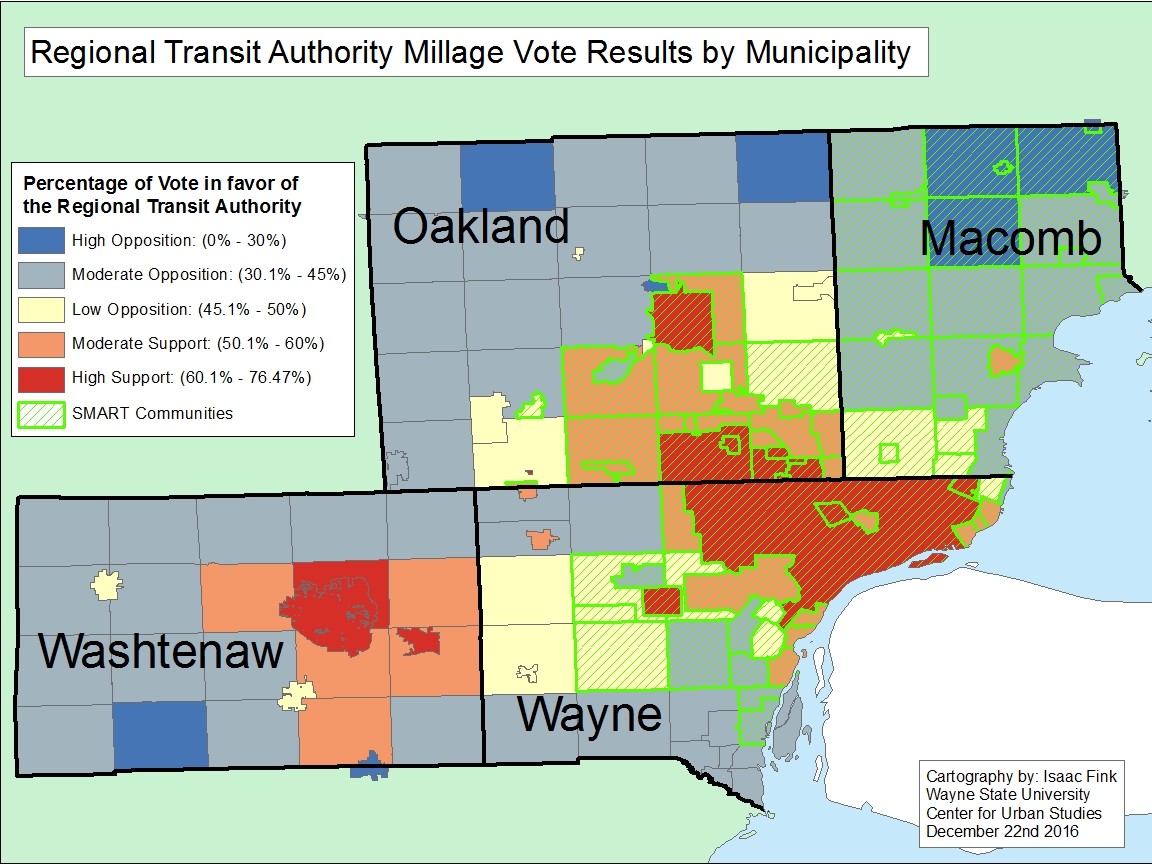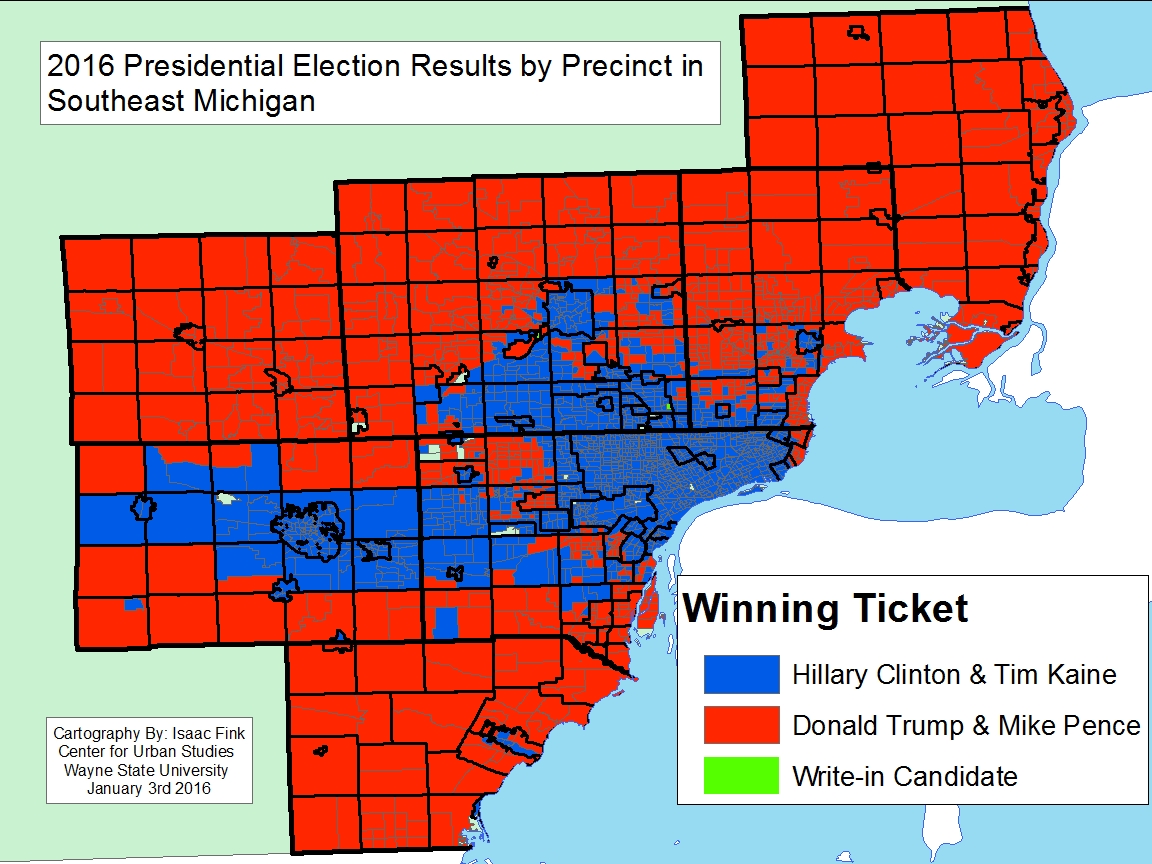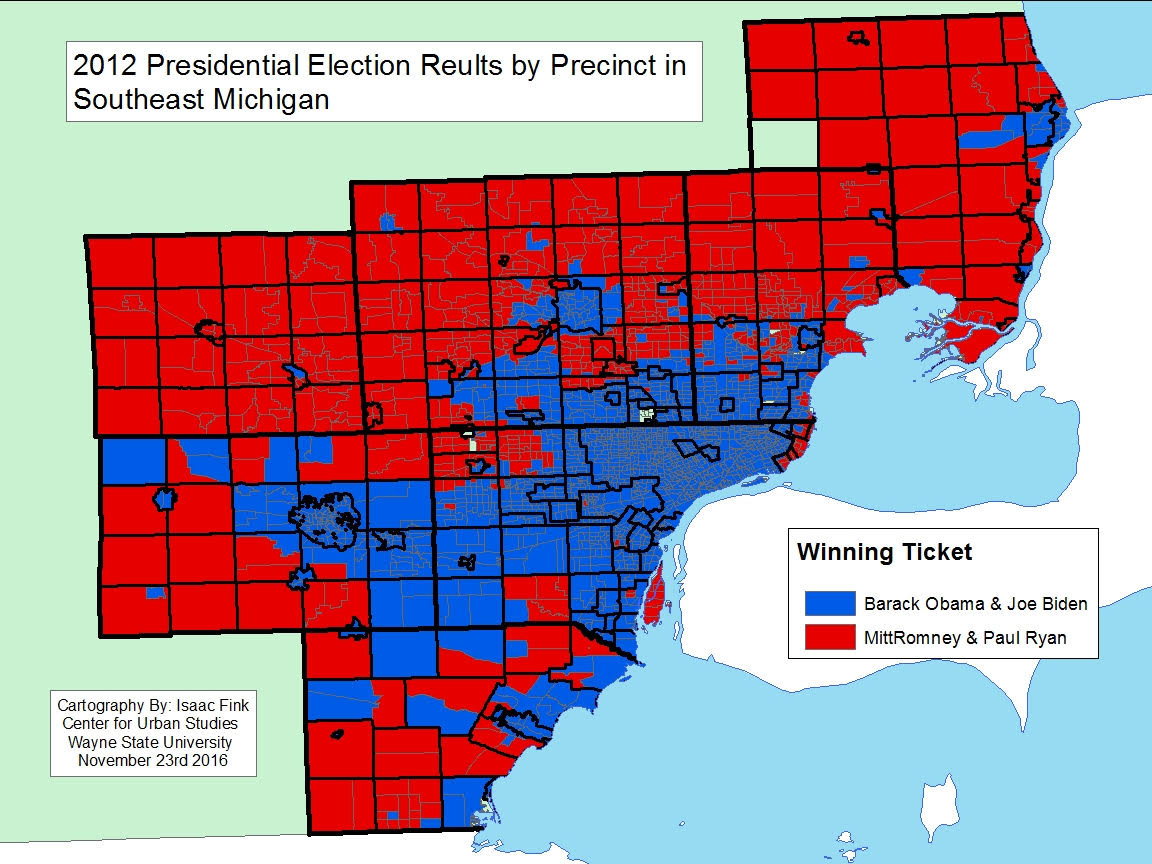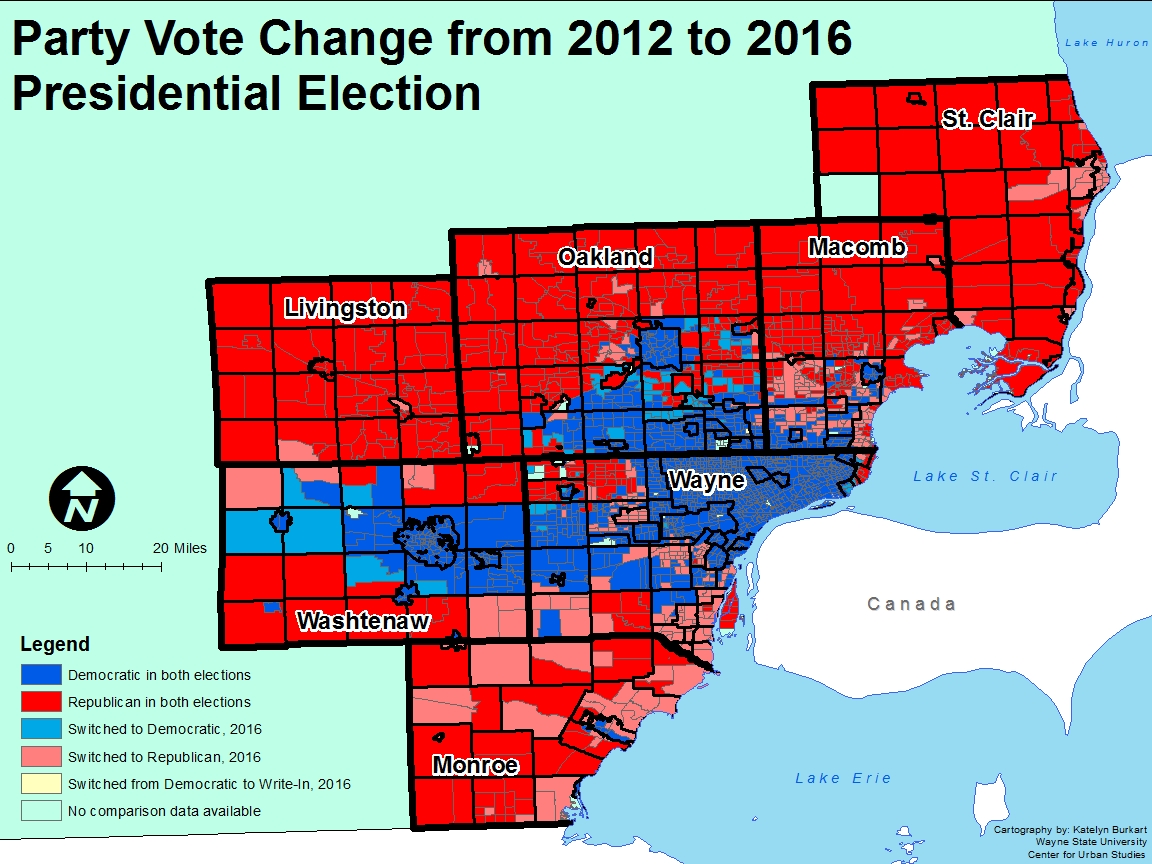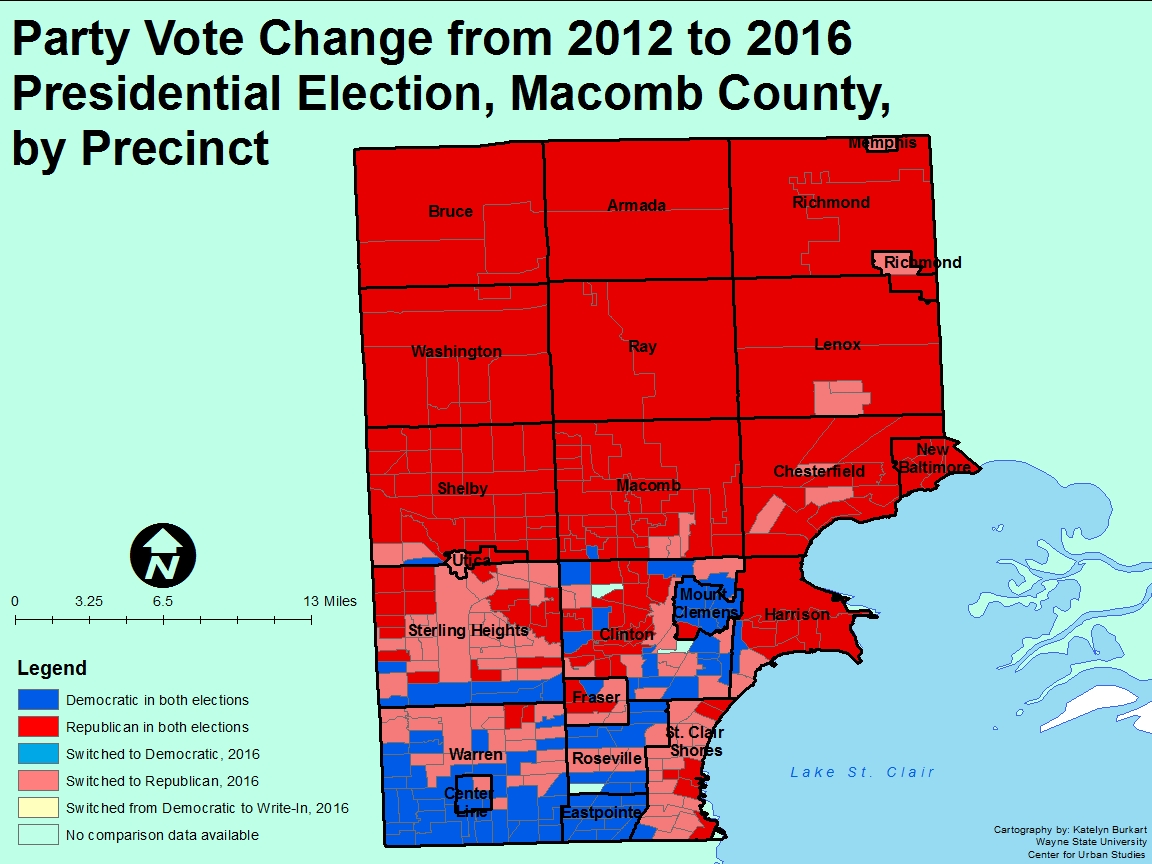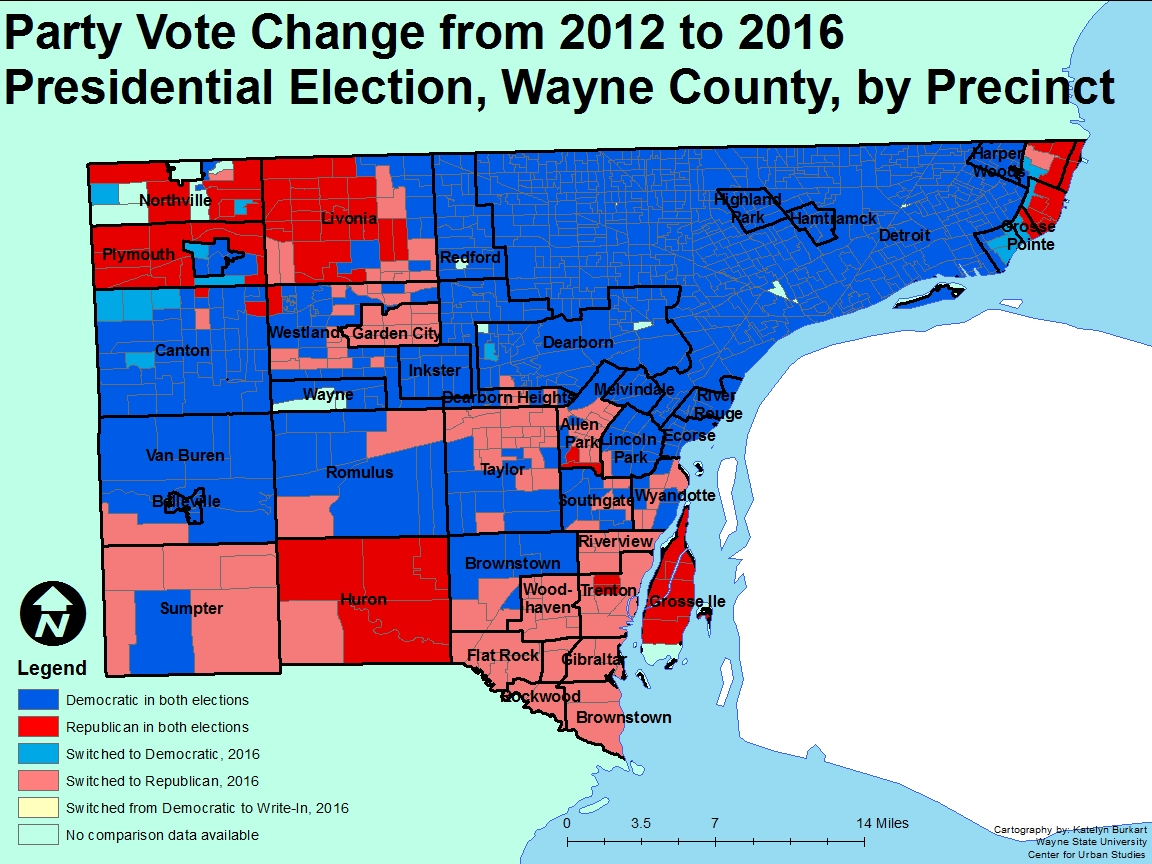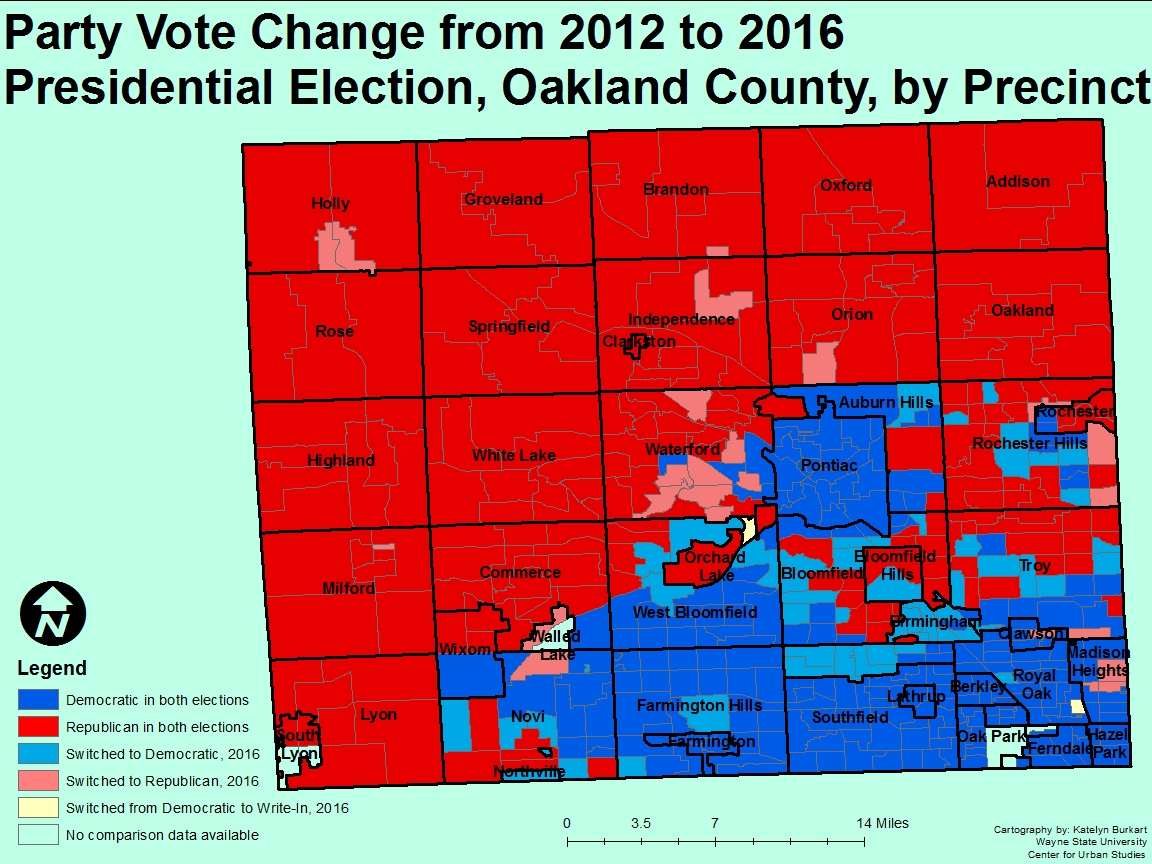In our last post regarding the 2016 Presidential election we highlighted what areas in Southeastern Michigan flipped from Democratic to Republican, or Republican to Democratic. The most notable switch occurred in Macomb County where, much of the southern portion of the County went from voting Democratic in 2012 to Republican in 2016. This switch was also noticeably evident in the Downriver area of Wayne County.
In the 2016, Detroit and its inner-ring suburbs (Ferndale, Royal Oak, parts of Warren, etc.), along with Ann Arbor and its surrounding cities to the east and west, had Democratic Candidate Hillary Clinton as the winning candidate. However, a large share of the region went to now President Donald Trump, including all of Livingston and St. Clair counties and majority of Macomb and nearly all of Monroe counties.
To shine additional light on the 2016 Presidential election, we will now be looking at the socioeconomic characteristics of the region, alongside which Presidential candidate won where. For this post, we will be discussing median income, particularly of the areas that flipped between the 2012 and 2016 elections.
When examining the region overall, the map below shows that majority of the areas in Southeastern Michigan that flipped from Democratic to Republican have a mid-range ($45,000-$70,000) median income. As we get further into the details of the region, we see this to be a defining factor for this group of precincts. Of the areas that have remained Republican, median incomes range from between $45,000 and to over $100,000. Of the areas that remained Democratic the median incomes range from about $17,000 to $100,000.
A deeper look at Macomb County shows that majority of the areas that switched from voting Democratic in 2012 to Republican in 2016 have a median income between $45,000 and $70,000. This is true for St. Clair Shores, Sterling Heights and parts of Chesterfield, Lenox, Harrison and Clinton townships, all of which had at least one precinct flip. In the northern part of Macomb County, which voted Republican in 2012 and 2016, the median income is above $70,000.
While portions of Warren also flipped from Democratic to Republican, it is categorized as having a median income below $45,000. But, as noted earlier, the city’s median income is $44,000.
In Oakland County, there were some high income areas-Bloomfield Township, Bloomfield Hills and Birmingham-that flipped to Democratic. However, we see that majority of the County went Republican in 2012 and 2016, and majority of these communities have median incomes above $70,000. The communities in the southeastern portion of Oakland County (Ferndale, Royal Oak, Oak Park) have remained Democratic communities for both elections and their median incomes top out at $70,000. Pleasant Ridge and Huntington Woods are two higher income (above $70,000) communities in that portion of the County that have traditionally gone Democratic.
As noted earlier, it was the Downriver portion of Wayne County that flipped from Democratic to Republican for the 2016 election. In this portion of the County (Trenton, Woodhaven, Riverview, Flatrock, Gibraltar, Rockwood, etc.) 10 of the communities have a median income between $45,000 and $70,000. Parts of Taylor (median income below $45,000) and Brownstown (median income between $70,000 and $100,000) also switched.
Throughout Wayne County, median incomes vary greatly, with communities located on the County’s north eastside (Detroit, Hamtramck, Highland Park and Ecorse, etc.) having a median incomes below $45,000 and communities on the northwest side (Northville, Canton, Livonia) having median incomes above $70,000. Communities with median incomes between the two extremes are also scattered throughout the county. In Wayne County, of the 14 communities with median incomes above $70,000, 10 had a large Republican turnout. Of that 10, four showed precincts that flipped from Democratic to Republican, while the rest remained Republican between 2012 and 2016.
In Washtenaw County, there are no communities that have a median income less than $45,000. Of the four that had precincts flip from Democratic to Republican between the two elections, the median incomes range between $67,000 (Northfield) and $94,000 (Dexter).
Of the communities that with precincts that flipped from Republican to Democratic, five had median incomes above $70,000 and one had a median income at $69,000.
By examining the election data alongside median income data, we are able to determine there were 32 communities with median incomes between $45,000 and $70,000 with at least one precinct that flipped from Democratic to Republican between the 2012 and 2016 elections. When the opposite occurred-an area flipped from Republican to Democratic-the median income of that area was above $70,000.
Next week we will look at the election outcomes while also looking at the racial makeup of Southeastern Michigan’s communities.
